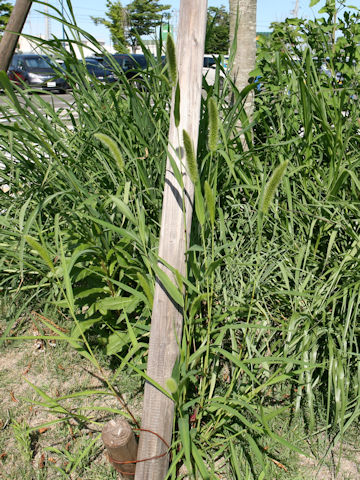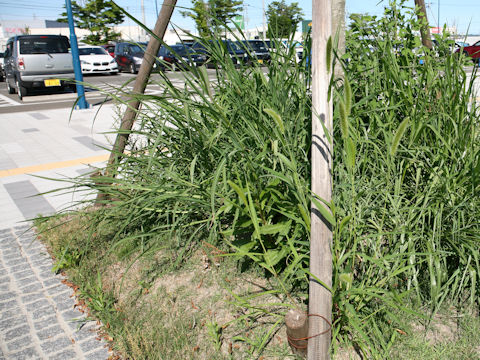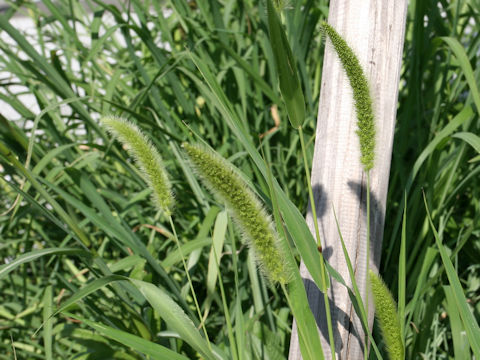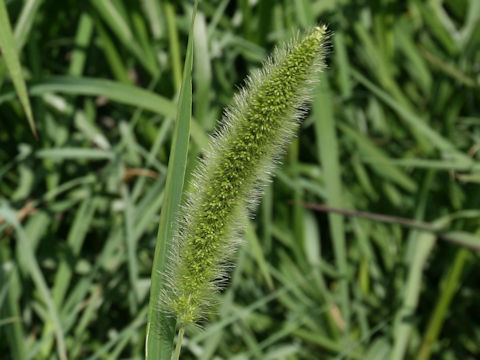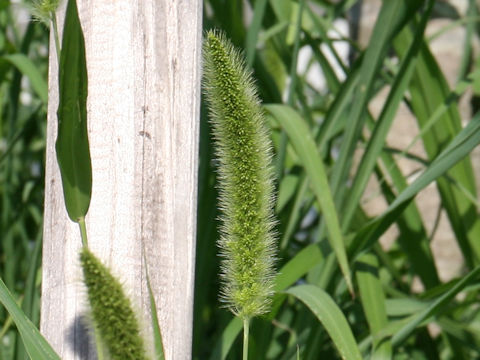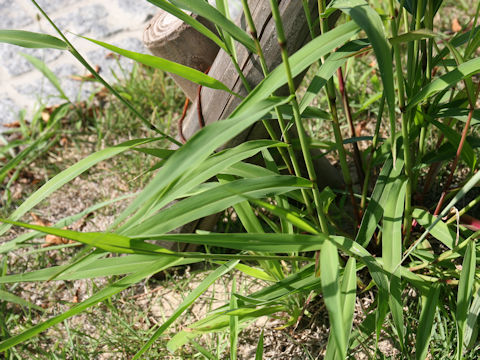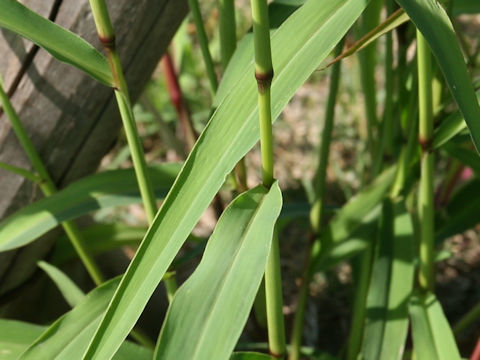
|
The Giant green bristle grass (Setaria x pycnocoma) belongs to Poaceae (the Grass family). It is an annual herb that is distributed all over Japan. It is said to be a natural hybrid between "foxtail millet" and "green bristle grass", but there is also the idea that it was born from a variation in the natural state of "green bristle grass". This grass grows in fields and roadsides, and the height of the culm is about 1-1.2 meters. The flower spikes are borne from August to November. They are 7-24 cm long and 1.5-2.5 cm wide, larger than "green bristle grass", and the inflorescences are branched. The spikelets are slightly large, 2.5-3 mm in length, and remain green even when they mature. It is said that it is difficult to visually distinguish the large-sized flower spikes from "German millet" (Setaria itarika var.germanicum). It is a C4 plant (Plants with C4-type photosynthesis).
|
